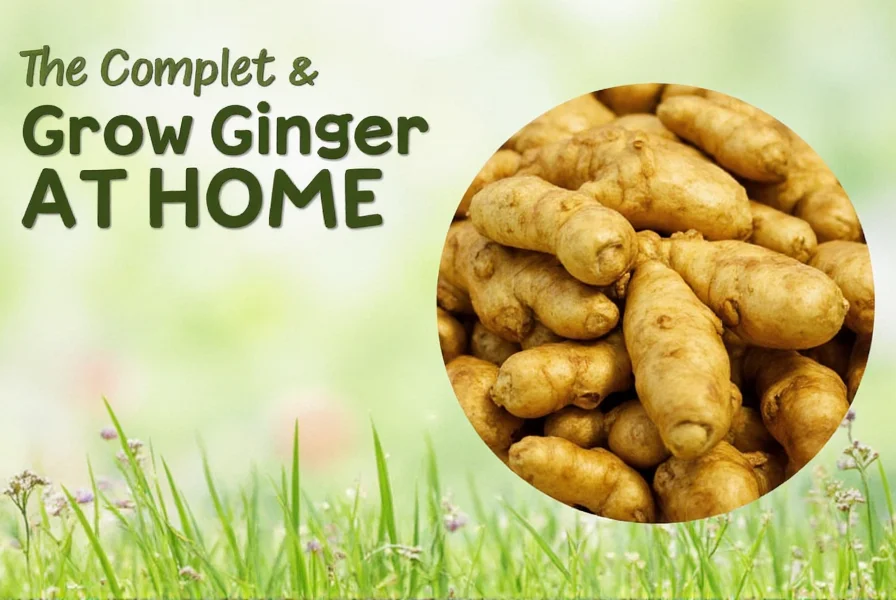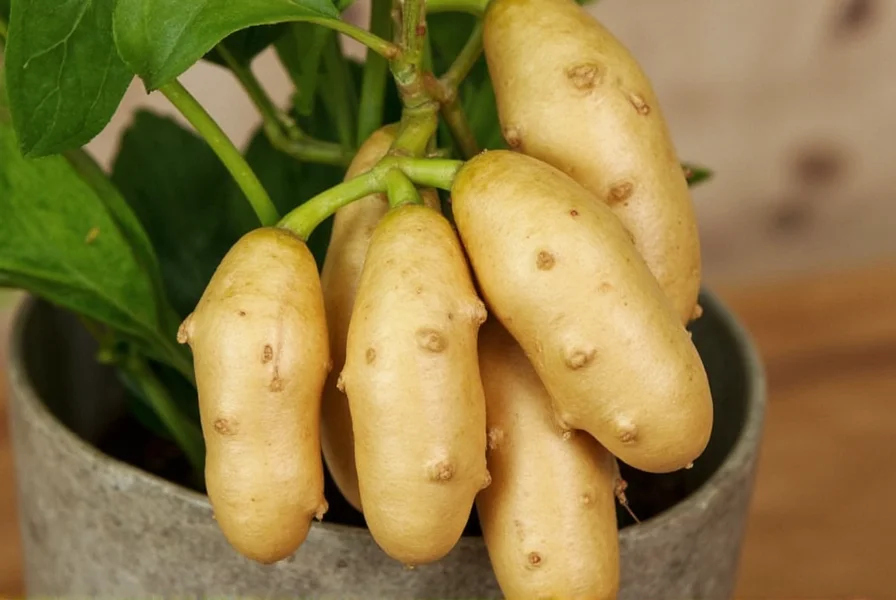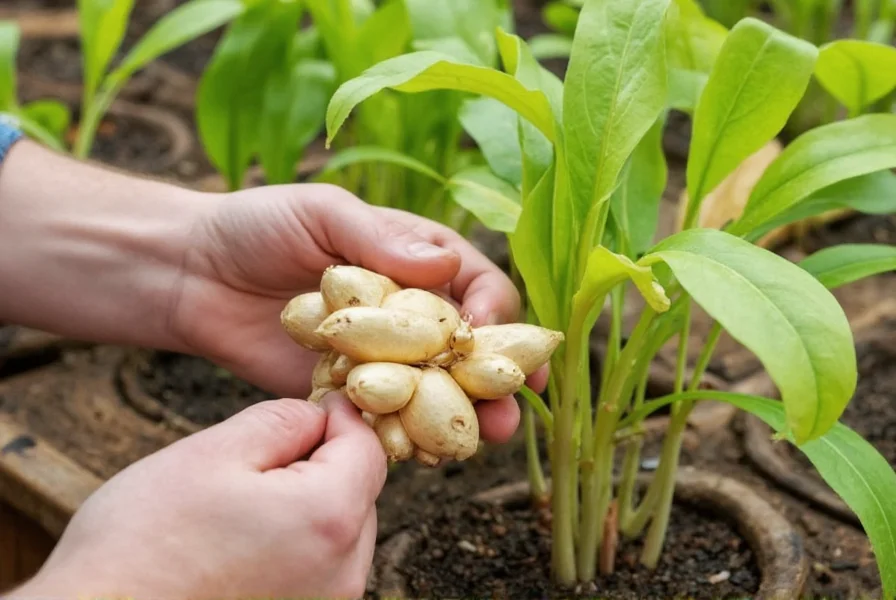Growing your own ginger at home is a rewarding project that puts fresh, organic ginger within arm's reach. Unlike many herbs and vegetables, ginger thrives in partial shade and requires less space than you might expect, making it perfect for indoor gardening or small outdoor spaces. Whether you're an experienced gardener or trying your hand at cultivation for the first time, growing ginger at home offers a satisfying harvest of this versatile root.
Why Ginger Makes an Excellent Home Garden Project
Ginger (Zingiber officinale) naturally grows in tropical environments with warm temperatures and high humidity, but it adapts remarkably well to container gardening. The plant's rhizomes—what we commonly call "ginger root"—actually grow horizontally beneath the soil surface rather than downward like true roots. This growth pattern makes ginger particularly suitable for growing ginger in containers with limited depth.
One of the most appealing aspects of growing ginger at home is that you can start with a piece from your local grocery store. Look for plump, firm roots with multiple 'eyes' or growth nodes. Organic ginger often works best since non-organic varieties may be treated with growth inhibitors.
Essential Materials for Growing Ginger at Home
Before you begin your ginger-growing journey, gather these basic supplies:
| Item | Requirements | Why It Matters |
|---|---|---|
| Ginger rhizome | Fresh, plump with visible eyes | Healthy starting material ensures successful sprouting |
| Container | 10-12 inches deep, wide drainage holes | Prevents root rot while accommodating horizontal growth |
| Soil | Well-draining potting mix with organic matter | Moist but not waterlogged conditions mimic natural habitat |
| Location | Indirect sunlight or partial shade | Protects delicate shoots from sunburn while providing energy |

Step-by-Step Guide to Growing Ginger at Home
Preparing Your Ginger Root
Before planting, soak your ginger root in warm water for 1-2 hours. This rehydrates the rhizome and encourages sprouting. Then, cut the root into 1-2 inch pieces, making sure each piece has at least one eye. Allow the cut pieces to dry for 24 hours to form a protective callus that prevents rot.
Planting Your Ginger
Fill your container with 2-3 inches of your prepared soil mix. Place the ginger pieces horizontally with the eyes facing up, then cover with another 1-2 inches of soil. Water thoroughly until it drains from the bottom, then place in a warm location with indirect light. The ideal temperature for sprouting is 70-75°F (21-24°C).
Watering and Care Routine
Maintain consistent moisture without saturation—the best soil for growing ginger indoors should feel like a damp sponge. Water when the top inch of soil feels dry. During active growth (spring and summer), water 1-2 times weekly. In cooler months, reduce watering frequency. Mist the leaves occasionally to increase humidity, which ginger appreciates.
Understanding the Ginger Growth Timeline
Patience is essential when you're growing ginger at home. Here's what to expect:
- Weeks 1-4: Sprouts emerge as small green shoots. This initial growth phase may take several weeks.
- Months 2-4: The plant develops multiple leafy shoots and begins expanding its rhizome network underground.
- Months 4-6: You can carefully harvest small portions by gently digging around the edges of the container.
- Months 8-10: Full maturity reached. The plant will begin to yellow and die back, signaling it's ready for complete harvest.
Troubleshooting Common Ginger Growing Problems
Even with proper care, you might encounter these issues when growing ginger at home:
Root Rot
Symptoms: Yellowing leaves, mushy rhizomes, foul odor
Solution: Reduce watering frequency, ensure proper drainage, and consider repotting in fresh soil. Prevention is key—the best soil for growing ginger indoors contains perlite or sand for improved drainage.
Slow or No Growth
Possible causes: Dormant rhizome, insufficient warmth, poor quality starting material
Solution: Ensure temperatures stay above 70°F (21°C), use organic ginger with visible eyes, and be patient—sprouting can take 2-4 weeks.
Leaf Yellowing
Causes: Overwatering, nutrient deficiency, or natural dormancy
Solution: Adjust watering habits, apply balanced liquid fertilizer monthly during growing season, or recognize that yellowing in fall indicates natural dormancy before harvest.

Harvesting Your Home-Grown Ginger
You have two harvesting options when growing ginger at home:
- Partial harvest: After 4-6 months, carefully dig around the edges of the container to remove small portions while leaving the main plant intact. This allows continuous harvest.
- Full harvest: At 8-10 months, when leaves begin yellowing, stop watering and allow the soil to dry completely. Remove the entire rhizome network, clean, and store.
For storage, keep harvested ginger in a cool, dark place or refrigerate in a paper bag. Properly stored ginger remains fresh for several weeks. You can also freeze ginger for longer storage or slice and dry it for powdered ginger.
Maximizing Your Ginger Harvest
To ensure the best results with growing ginger at home, consider these professional tips:
- Start with multiple rhizome pieces to increase your chances of success
- Use a shallow, wide container rather than a deep pot to accommodate ginger's horizontal growth pattern
- Apply a balanced liquid fertilizer every 4-6 weeks during active growth
- Rotate your container periodically for even light exposure
- Consider growing ginger in a greenhouse or under grow lights during winter months for year-round production
Remember that the timeframe for growing ginger at home varies based on growing conditions. Warmer temperatures and consistent moisture accelerate growth, while cooler conditions slow the process. With proper care, a single ginger plant can produce harvests for multiple seasons.
Frequently Asked Questions
Can I grow ginger from grocery store ginger?
Yes, you can successfully grow ginger from grocery store ginger, though organic varieties work best as non-organic ginger may be treated with growth inhibitors. Look for plump roots with multiple visible 'eyes' or growth nodes for the best chance of success. Soak the root in warm water for 1-2 hours before planting to encourage sprouting.
How long does it take to grow ginger at home?
Ginger typically takes 8-10 months to reach full maturity, but you can begin harvesting small portions after 4-6 months. The exact timeframe depends on growing conditions - warmer temperatures (70-90°F) and consistent moisture accelerate growth, while cooler conditions slow the process.
What's the best soil for growing ginger indoors?
The best soil for growing ginger indoors is a well-draining potting mix with added organic matter. A blend of regular potting soil with 20-30% perlite or coarse sand provides ideal drainage while retaining enough moisture. Ginger prefers slightly acidic soil with a pH of 5.5-6.5. Avoid heavy garden soils that retain too much water, as this can lead to root rot.
Why are my ginger plant leaves turning yellow?
Yellowing ginger leaves can indicate several issues: overwatering (most common cause), nutrient deficiency, or natural dormancy. If the plant is mature (8+ months), yellowing may signal it's ready for harvest. For younger plants, check soil moisture - it should be consistently moist but not soggy. Reduce watering if soil stays wet for more than 2 days after watering.
Can I grow ginger indoors year-round?
Yes, you can grow ginger indoors year-round with proper conditions. Ginger needs warm temperatures (70-90°F), high humidity, and indirect sunlight. During winter months, you may need supplemental lighting and increased humidity (using a pebble tray or humidifier) to maintain ideal growing conditions. Indoor ginger typically grows more slowly than outdoor plants but can produce harvests continuously with proper care.











 浙公网安备
33010002000092号
浙公网安备
33010002000092号 浙B2-20120091-4
浙B2-20120091-4